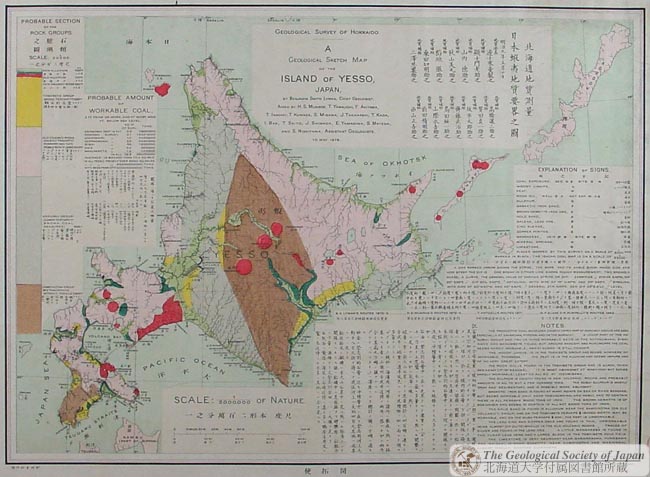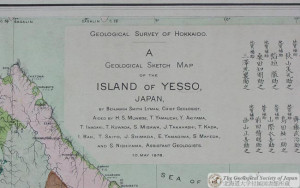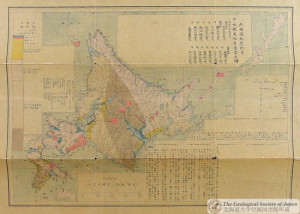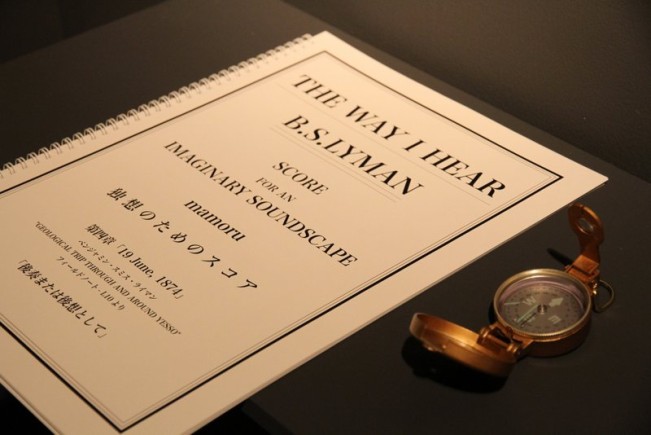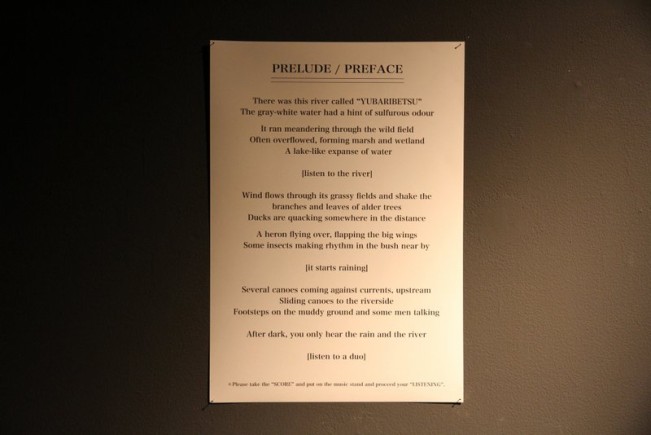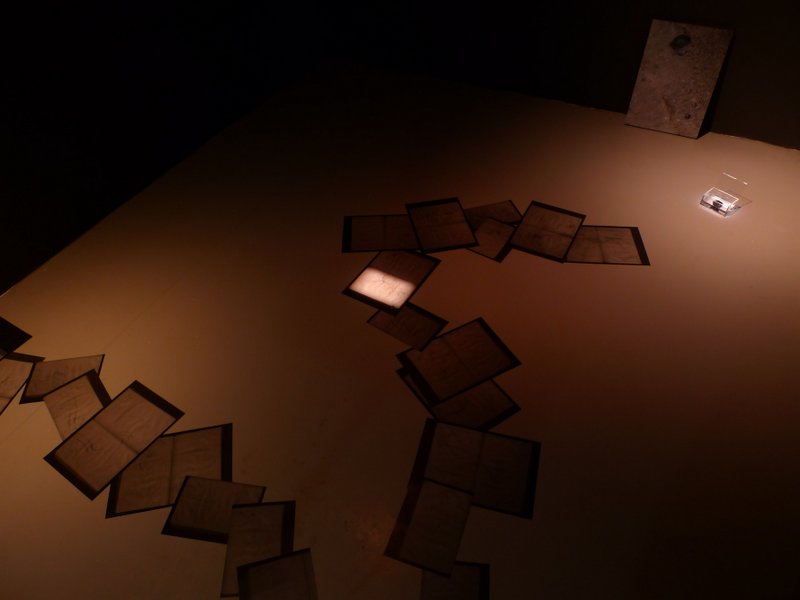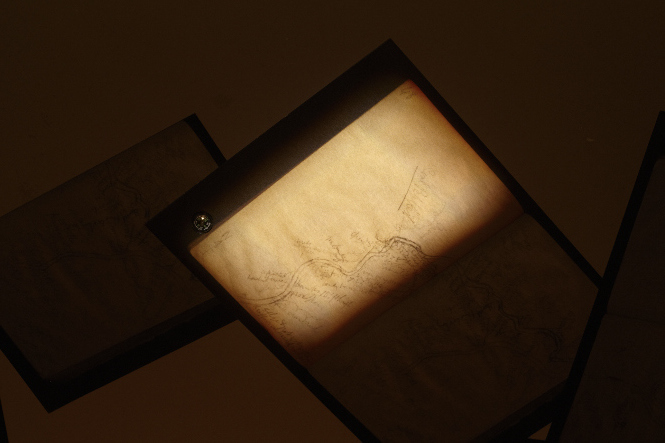Tokyo Wondersite is one of Tokyo’s hubs for emerging artistic talent. It’s actually one of the few places which are funded to do this. Other galleries are often seeking fresh talent but many artists still struggle to produce work and often have full or part time day jobs. Boasting three centrally located spaces (Shibuya, TWS Residency and Hongo) it also runs residencies, organizes symposiums and is an all round good egg of the Japanese art scene.
The current show Tokyo Story 2014 ends June 8 and is part one of a two part concept rousing on artists responses to Japanese identity. To briefly summarize, 6 artists occupy 3 floors in a kind of pyramid. Floor one is a hotchpotch of installation and documentation and features the work of three of the six, Ichiro Endo, Chikara Matsumoto and Daisuke Nagaoka. The top is the focal point and features only the work of Yoshihiro Yamamoto (photographs and a delicate and heart breaking video work about Fukushima). The middle features two artist Saiko T. Kase and Mamoru Okuno.
I want to focus on his work. I met Mamoru in 2007 at Bank Art space in Yokohama. I later found out more biographical detail (he had studied music in the U.S. before switching to “sound art” due to a tendon problem). His early work sampled sounds, looped them, re-integrated them into performances that combined the immediacy of the voice with the notion of sound physically resonating within space so that pre-recorded moments could simultaneously exist within a new space, functioning much like memory.
Over the years his work developed and his numerous performances in gallery and non gallery spaces utilized everyday materials such as straws, (cup) noodles, tea, coffee. Some might say his work has a Japanese sensibility in that it is stripping the moment of the unnecessary to draw attention to what is there but his sensibility is one of space and sound.
“Is it possible to hear a sound that one has never heard before?”
Sounds of plastic wrapping, of coat hangers, of people sharing an experience. This idea has been developing and deepening and the current work “THE WAY I HEAR B.S. LYMAN” (the 4th Movement; 19 June 1874) which is a delicate synthesis of multiple elements – the musician and his musical score, the actor and his stage for performance, the reader and his created world. The piece is based on extensive research of the work of B.S. Lyman, an American geologist employed in the Meiji period by the Japanese government to survey Hokkaido (then called Yesso/Ezo). He found that it was rich in coal, a fact that, along with silk, helped form part of Japan’s major industrial exports.
Mamoru poses the rhetorical question: “Is it possible to hear a sound that one has never heard before?” His piece, The 4th Movement, is based on a seminal scene in which Lyman finds coal pebbles on a sandy beach of the River Yubari.
Entering the slightly darkened space you see an empty stand, to your right is a framed geological map, to your left some text, and a small shelf. The walls are black, on the floor in the shape of the map are color copies of an old journal. Sitting on the shelf are two musical scores, one written in Japanese, one English and a compass. Your are instructed to place the score on the stand. You read and as you read you imagine the sounds. The act of reading is something we do without thinking, reading it as a “score” in this way brings a heightened awareness of both the act of reading and the sounds which you imagine. The whole work is a synthesis of the notion of evocation and poses a question – where do we actually “hear” sound? Is it the vibrations of the air, or is it within our brains as we “receive” this external sound.
Looking at this work I was reminded of reading a poem, reading a letter, researching an essay, performing at a concert. The presentation itself is understated not showy but the work, like the story of Lyman leaves a viewer/listener/reader with much to ponder about Japan and about the nature of perception.

